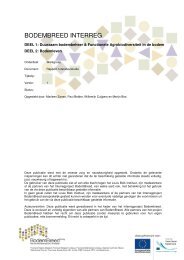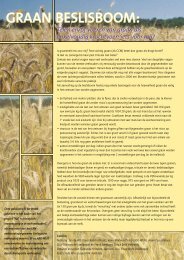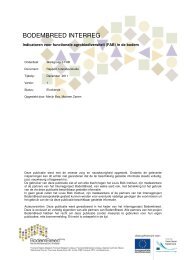Respiratory System Disorders and Therapy From a New - Louis Bolk ...
Respiratory System Disorders and Therapy From a New - Louis Bolk ...
Respiratory System Disorders and Therapy From a New - Louis Bolk ...
You also want an ePaper? Increase the reach of your titles
YUMPU automatically turns print PDFs into web optimized ePapers that Google loves.
3.2.4. Changed Awareness<br />
Sleepiness<br />
A patient with pneumonia <strong>and</strong> fever is less alert <strong>and</strong> concentrated <strong>and</strong> has a lowered<br />
awareness. There is a tendency to dose off. During the day, the patient often takes short<br />
or longer naps. Moreover, the attention span <strong>and</strong> the time span during which the patient<br />
can tolerate conscious contact with his surroundings are reduced. The patient easily tires,<br />
carrying a ‘good conversation’ is an impossibility, <strong>and</strong> the patient prefers to keep contacts<br />
to a minimum.<br />
The decreased ability to concentrate is indicative of a diminished formative capacity in<br />
the patient's mind (compare fig.2.4.).<br />
Need to Rest<br />
Sensory stimuli such as smell, light, or sound are experienced as disturbing. The patient<br />
tries, therefore, to protect himself from the outside world.<br />
The patient does not tolerate sensory stimuli very well <strong>and</strong> has a need to rest.<br />
Deliriousness<br />
In addition to the lowered awareness, an abnormal, generally incoherent type of awareness<br />
may occur with fever. The patient can become delirious, a situation in which strange,<br />
frightening, or even absurd scenes manifest themselves in the mind. In contrast to the<br />
anxiety of the asthmatic patient in which all awareness appears to concentrate on one<br />
thing, the inner scenes in a delirium are dynamic, often colorful, hyperactive, <strong>and</strong> quick to<br />
change. The richness of images <strong>and</strong> the dynamic quality of the scenes are similar to what<br />
we know from our dreams.<br />
In contrast to what we saw with asthma, the awareness of the pneumonia patient is<br />
insufficiently formed <strong>and</strong> the quickly changing images exhibit a form-dissolving tendency<br />
(fig.2.4.).

















